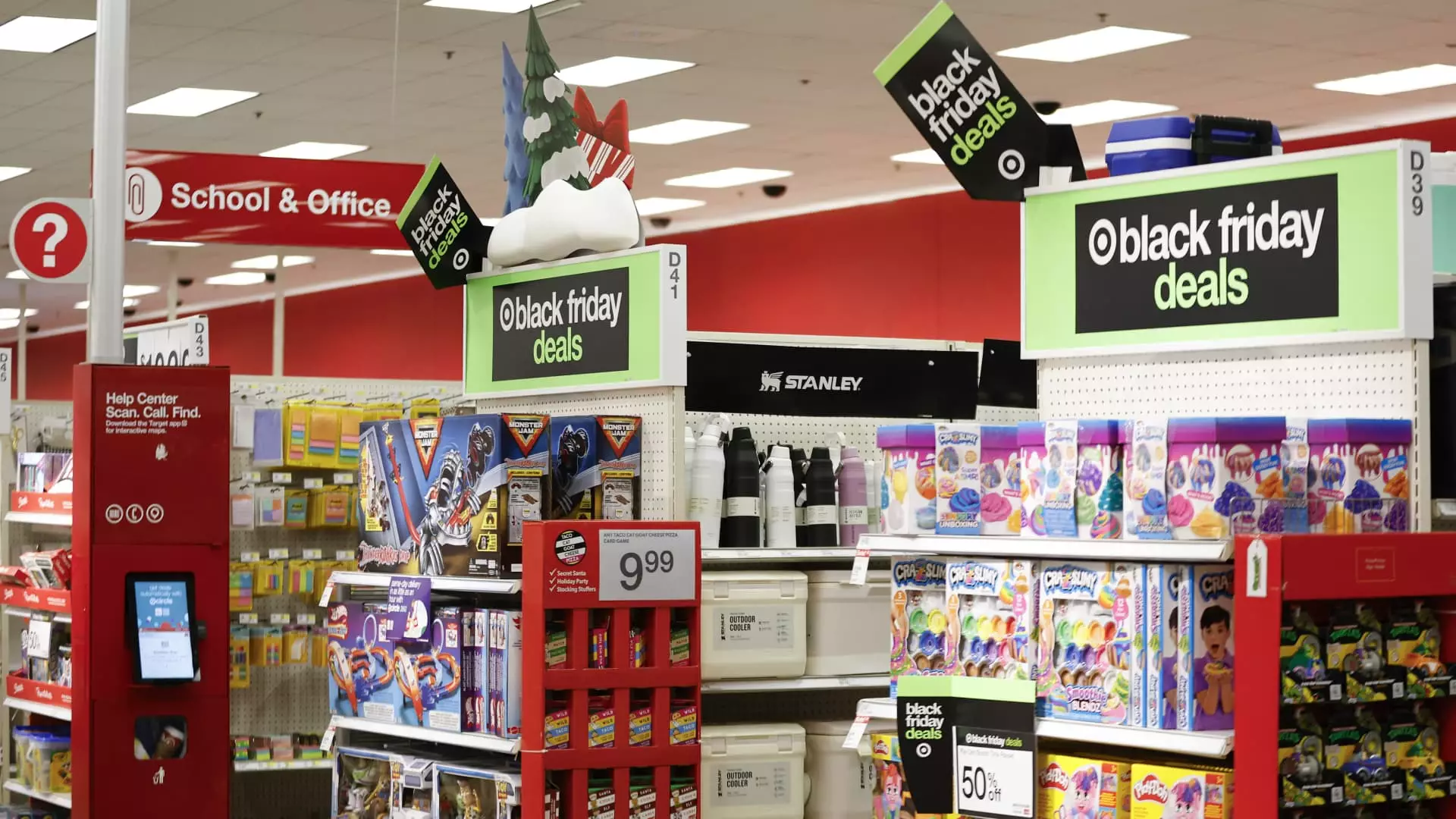As the retail landscape continually evolves, Target has recently responded to shifting consumer habits by adjusting its sales forecast for the fourth quarter. The day’s significance as a barometer for economic activity, especially during the holiday season, is underscored by Target’s expectation of a 1.5% rise in comparable sales—better than previous projections of stagnation. This upward revision highlights a critical insight: consumers increasingly find value in shopping during discount events, which are now pivotal in driving sales across the industry. Yet, while sales seem promising, it’s crucial to delve deeper into the implications of those numbers for Target’s profitability.
Target’s methodology for calculating comparable sales—a key performance indicator for many retailers—includes revenue generated from both its physical stores and online platforms that have been operational for at least 13 months. This metric is vital for assessing the retailer’s performance, as it offers a view of whether selling strategies resonate with loyal patrons as well as new customers drawn in by recent pricing strategies. Yet, despite the optimistic sales outlook, Target has refrained from increasing its profit forecast, suggesting that consumer discounts could be straining profit margins.
The anticipated earnings per share in the range of $1.85 to $2.45, along with full-year earnings estimated between $8.30 and $8.90 per share, indicate the need for cautious optimism within the company’s executive suite. The fear of potential profit erosion due to aggressive discounting raises a pertinent question about future sustainability in consumer spending habits.
Target’s situation provides a microcosmic view of broader trends affecting the retail sector. Competing retailers like Lululemon and American Eagle have also raised their fourth-quarter outlooks, even as their stock performance faltered following the announcements. Such mixed results point to a shifting sentiment in the investment community, where positive sales forecasts do not always translate into optimistic market reactions.
Key players in the sector, like Macy’s, maintain a more conservative outlook, projecting sales at the lower end of expected ranges. This disparity among retailers speaks volumes about varying consumer confidence levels and spending behaviors. The underlying economic stress—rooted in high inflation—has undoubtedly caused consumers to be more selective regarding their holiday purchases.
In a notable trend, the two-month combined sales period of November and December saw an increase of 2.8% in total sales, with digital sales alone surging nearly 9% from the previous year. Such growth, coupled with a 30% escalation in same-day deliveries through Target’s subscription service, Target Circle 360, embodies the brand’s significant shift towards convenience-driven shopping.
Target’s proactive approach to pricing and promotions has played a crucial role in attracting a broader customer base. The retailer’s initiative to reduce prices on thousands of frequently bought items—basic staples such as milk and diapers—is a strategic effort to draw in value-conscious consumers who have felt the pinch of rising living costs.
Amid these developments, Target has initiated significant leadership transitions to adapt to the current retail challenges. Notable retirements within its management, including Chief Stores Officer Mark Schindele and Chief Information Officer Brett Craig, bring fresh perspectives into the equation. The institution of new roles, such as the Chief Digital and Revenue Officer, indicates Target’s commitment to leveraging digital transformation to enhance customer experience and drive revenues.
Furthermore, Target’s Chief Operating Officer, Rick Gomez, highlighted consumer trends, noting a budgeting approach among shoppers who are still inclined to spend on essential holiday items. Examples include the overwhelming popularity of merchandise tied to cultural phenomena, like the sales of Taylor Swift’s book, demonstrating how retail is becoming more intimately linked with cultural trends.
While Target has displayed resilience through smart pricing and targeted promotions that attract shoppers, the underlying pressure from discounting strategies on profit margins cannot be ignored. The updated sales forecast provides a signal of possible recovery for retail amid economic uncertainties. However, as the retailer navigates an evolving market landscape, ongoing vigilance about consumer spending and profit sustainability will prove essential for their long-term success and stability.

